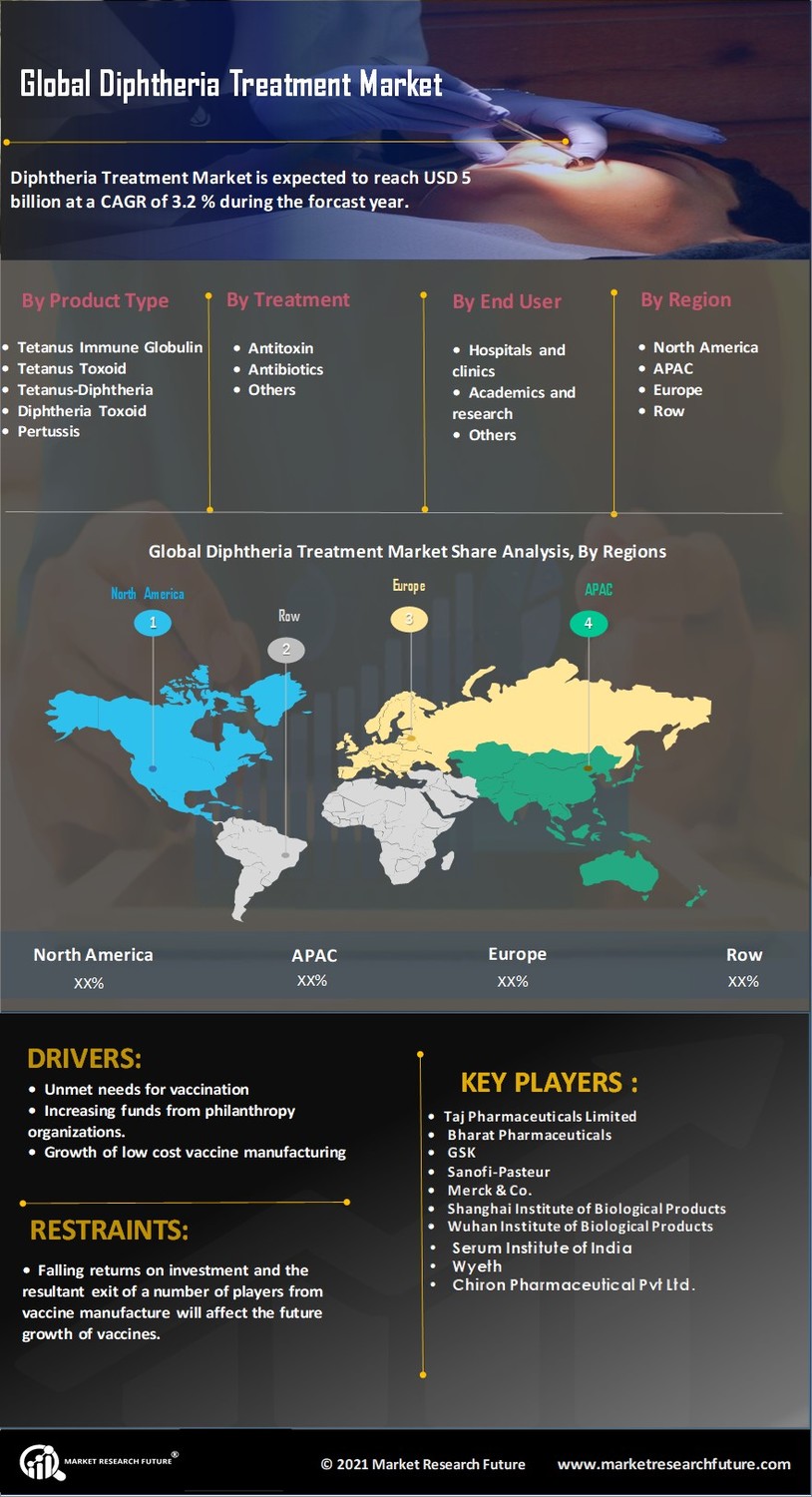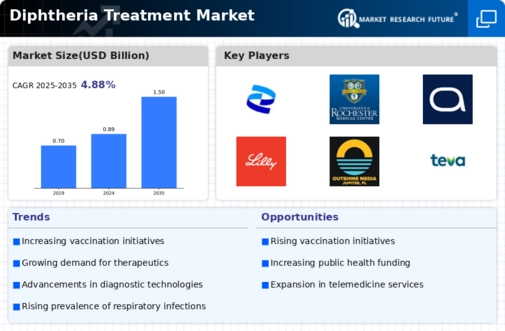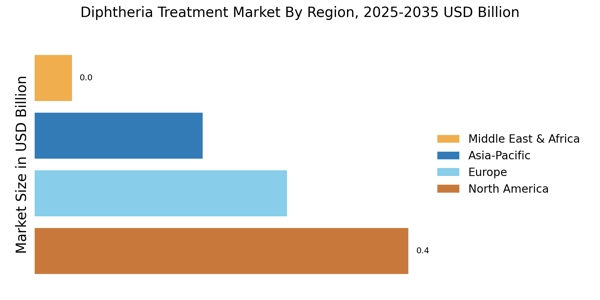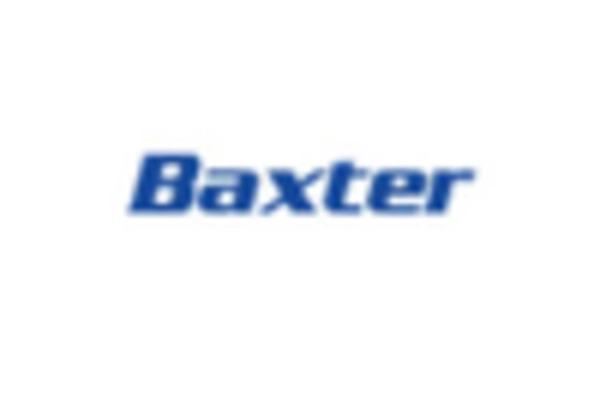Government Initiatives and Funding
Government initiatives aimed at controlling infectious diseases play a crucial role in shaping the Diphtheria Treatment Market Industry. Various health authorities are implementing vaccination campaigns and educational programs to raise awareness about diphtheria prevention and treatment. Increased funding for public health initiatives has been observed, with governments allocating resources to enhance healthcare infrastructure and improve access to treatments. For example, initiatives to provide free vaccinations in underserved communities are gaining traction, which may lead to a decrease in diphtheria cases and, consequently, a shift in treatment demand. This proactive approach by governments not only aims to reduce the incidence of diphtheria but also supports the growth of the treatment market by ensuring that effective therapies are available to those in need.
Rising Incidence of Diphtheria Cases
The Diphtheria Treatment Market Industry is experiencing a notable increase in demand due to the rising incidence of diphtheria cases in various regions. Reports indicate that the number of diphtheria cases has surged, particularly in areas with low vaccination coverage. This trend necessitates the development and distribution of effective treatment options, thereby driving market growth. The World Health Organization has highlighted that diphtheria remains a public health concern, especially in developing nations. Consequently, healthcare providers are compelled to invest in innovative treatment solutions to combat this resurgence. The increasing awareness of diphtheria's potential severity further propels the need for effective treatments, indicating a robust market opportunity for pharmaceutical companies specializing in this area.
Advancements in Pharmaceutical Research
The Diphtheria Treatment Market Industry is significantly influenced by advancements in pharmaceutical research. Recent innovations in drug development and vaccine formulation have led to more effective treatment options for diphtheria. Research institutions and pharmaceutical companies are increasingly focusing on creating novel therapies that enhance patient outcomes. For instance, the introduction of monoclonal antibodies and improved antitoxins has shown promise in clinical trials, potentially revolutionizing treatment protocols. Furthermore, the global market for diphtheria vaccines is projected to grow, with estimates suggesting a compound annual growth rate of over 5% in the coming years. This growth is indicative of the ongoing commitment to research and development in the field, which is likely to bolster the Diphtheria Treatment Market.
Growing Awareness of Infectious Diseases
The Diphtheria Treatment Market Industry is benefiting from a growing awareness of infectious diseases among the general population. Educational campaigns and media coverage have heightened public understanding of diphtheria, its symptoms, and the importance of timely treatment. This increased awareness is likely to lead to more individuals seeking medical attention when symptoms arise, thereby driving demand for diphtheria treatments. Additionally, healthcare providers are becoming more vigilant in diagnosing and treating diphtheria, which may result in earlier interventions and improved patient outcomes. The emphasis on infectious disease education is expected to continue, further solidifying the market for diphtheria treatments as more people recognize the need for effective medical solutions.
Emerging Markets and Healthcare Expansion
The Diphtheria Treatment Market Industry is poised for growth due to the expansion of healthcare services in emerging markets. As economies develop, there is a corresponding increase in healthcare access and infrastructure improvements. This expansion facilitates the distribution of diphtheria treatments and vaccines, particularly in regions where the disease has been historically prevalent. Market analysts suggest that the demand for diphtheria treatments will rise as healthcare systems become more robust and capable of addressing infectious diseases. Furthermore, partnerships between governments and private sector entities are likely to enhance the availability of treatments, thereby fostering a more competitive market landscape. The potential for growth in these emerging markets presents a unique opportunity for stakeholders in the Diphtheria Treatment Market.


















Leave a Comment